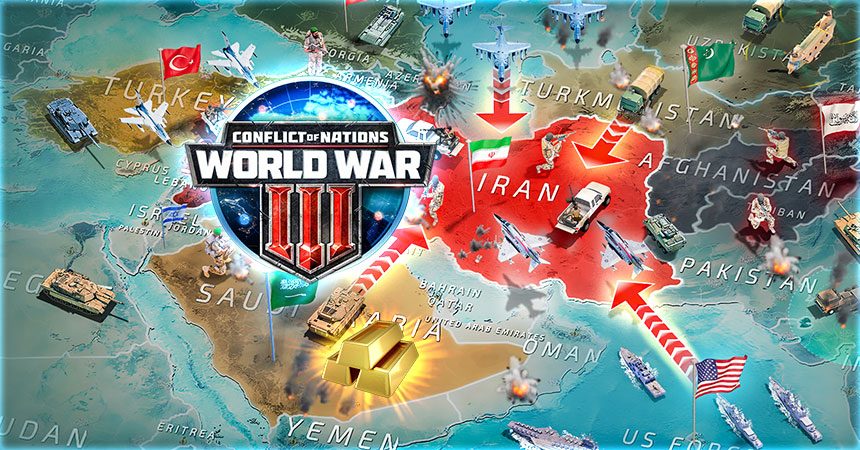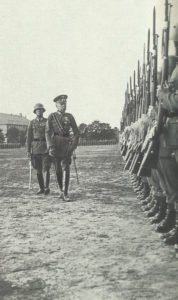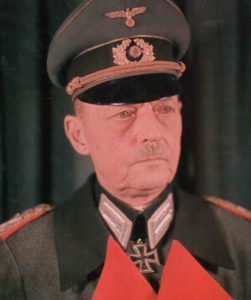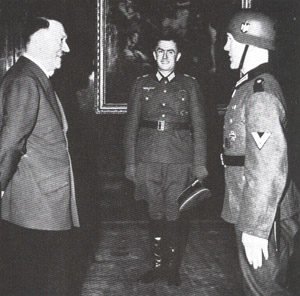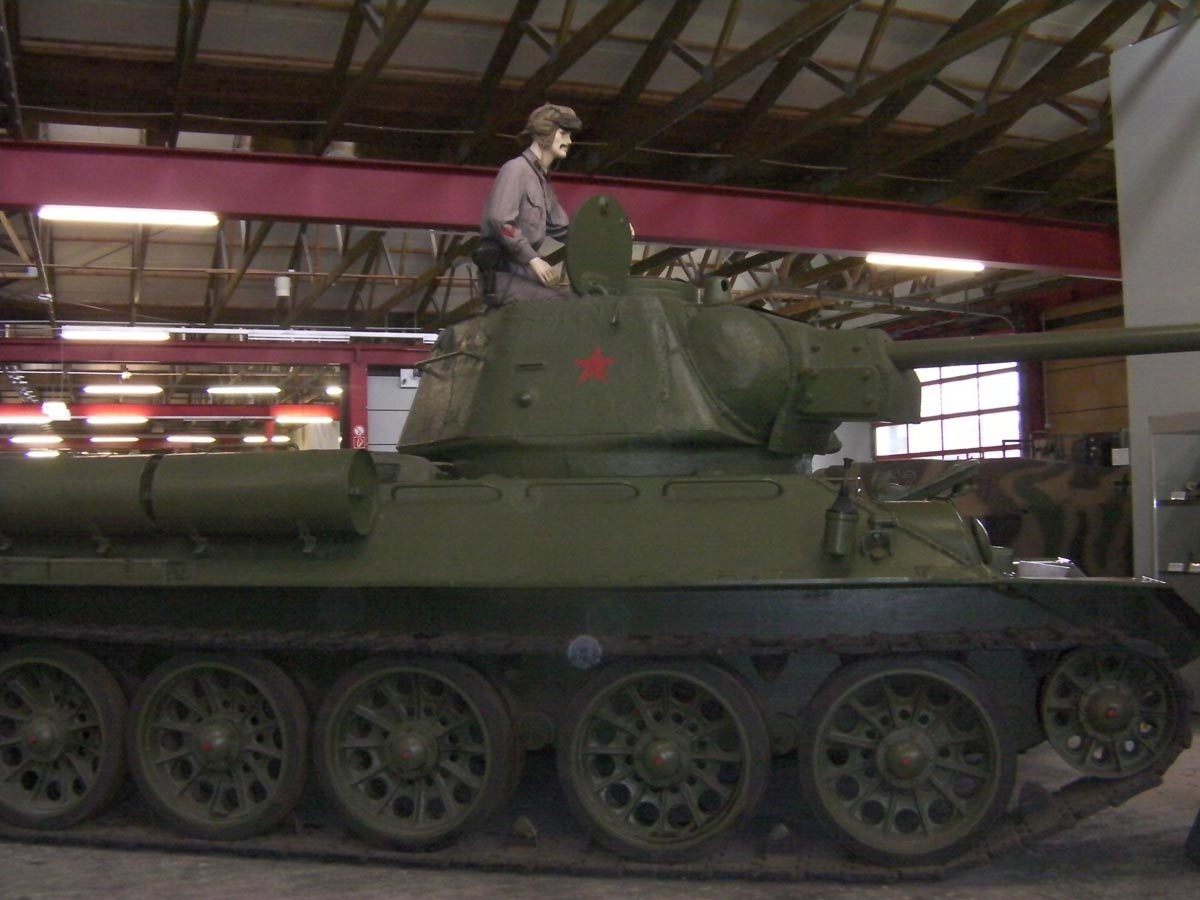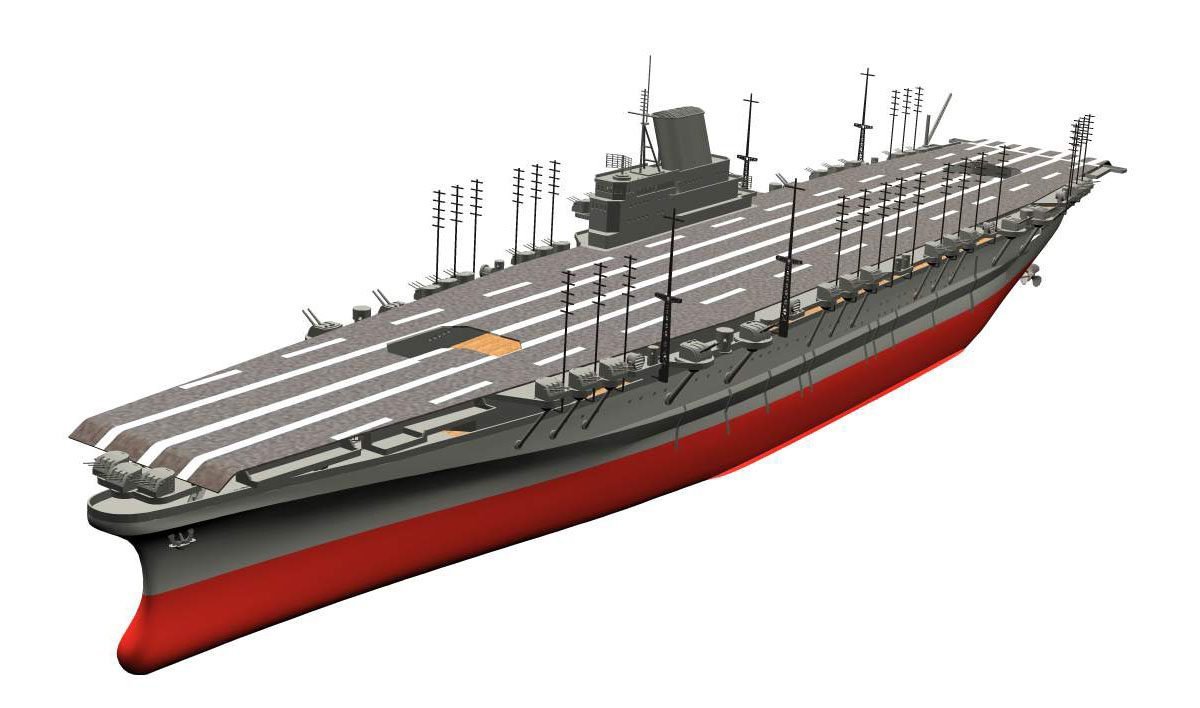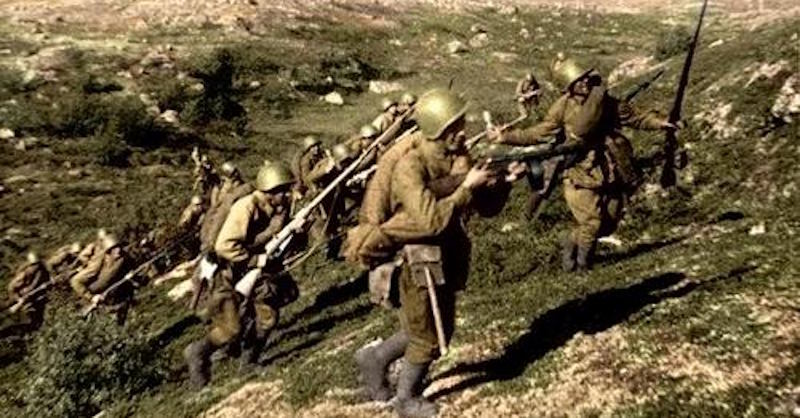Military ranks, designations and description in the Second World War in international comparison.
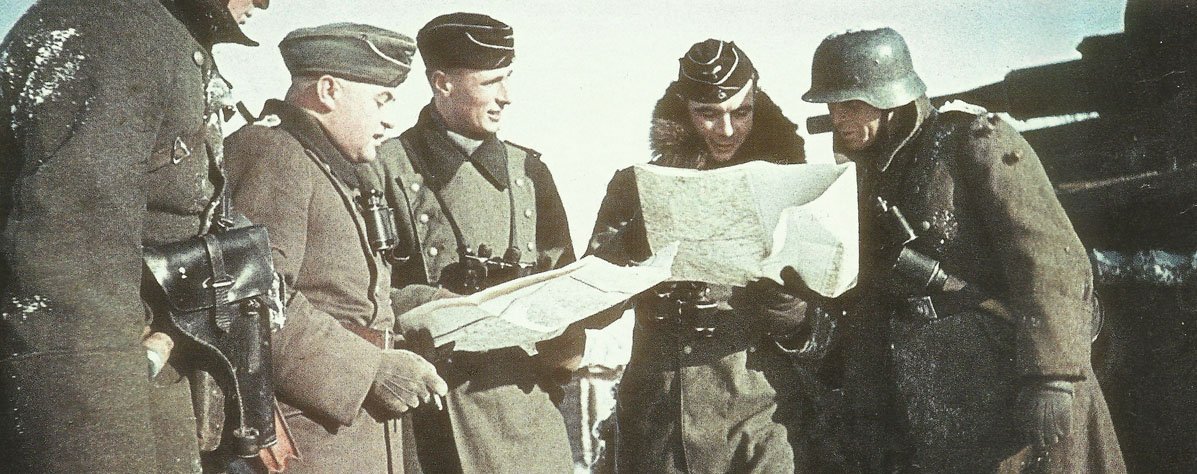
Ranks in the National Armies and Air Forces of World War II and the promotion system in the German Army.
Origin of Military Ranks
Table of Contents
The origin of military ranks dates back to ancient civilizations, evolving over time.
Ancient origins:
– Ancient Egypt, Greece, and Rome had military hierarchies.
– Roman legions used ranks like centurion and tribune.
Medieval period:
– Feudal systems influenced military structures.
– Knighthood and chivalric orders introduced new ranks.
16th-17th centuries:
– Modern rank structures began to emerge.
– Terms like “captain,” “lieutenant,” and “sergeant” came into use.
18th-19th centuries:
– Napoleonic Wars greatly influenced rank structures.
– Standardization of ranks across different armies began.
20th century to present:
– World Wars led to further refinement and standardization.
– NATO standardized rank structures among member countries.
Key factors in rank development:
– Need for clear chain of command
– Professionalization of military service
– Technological advancements in warfare
– Political and social changes
Many current ranks have etymological roots in various languages:
– “Lieutenant” (French: “place holder”)
– “Captain” (Latin: “head” or “chief”)
– “Colonel” (Italian: “column leader”)
– “General” (Latin: “of a whole kind”)
The specific evolution of ranks varies by country and military tradition, but these general trends apply to many Western military structures.
Promotions in the German Army
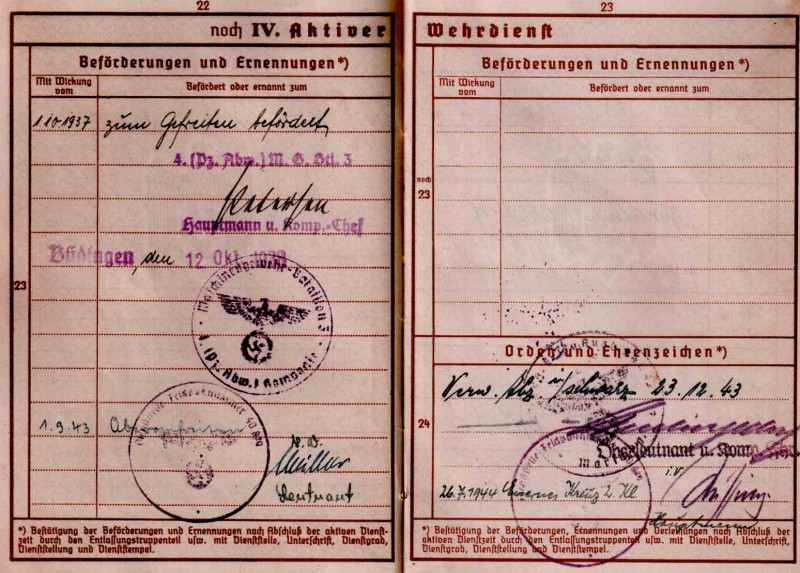
Promotions in the German Army before the First World War took place after the years of service and were extremely slow compared to today’s conditions. It usually took 15 years from lieutenant to captain and another ten years from there to major. For this reason the mass of German officers ended their active career with the rank of Major.
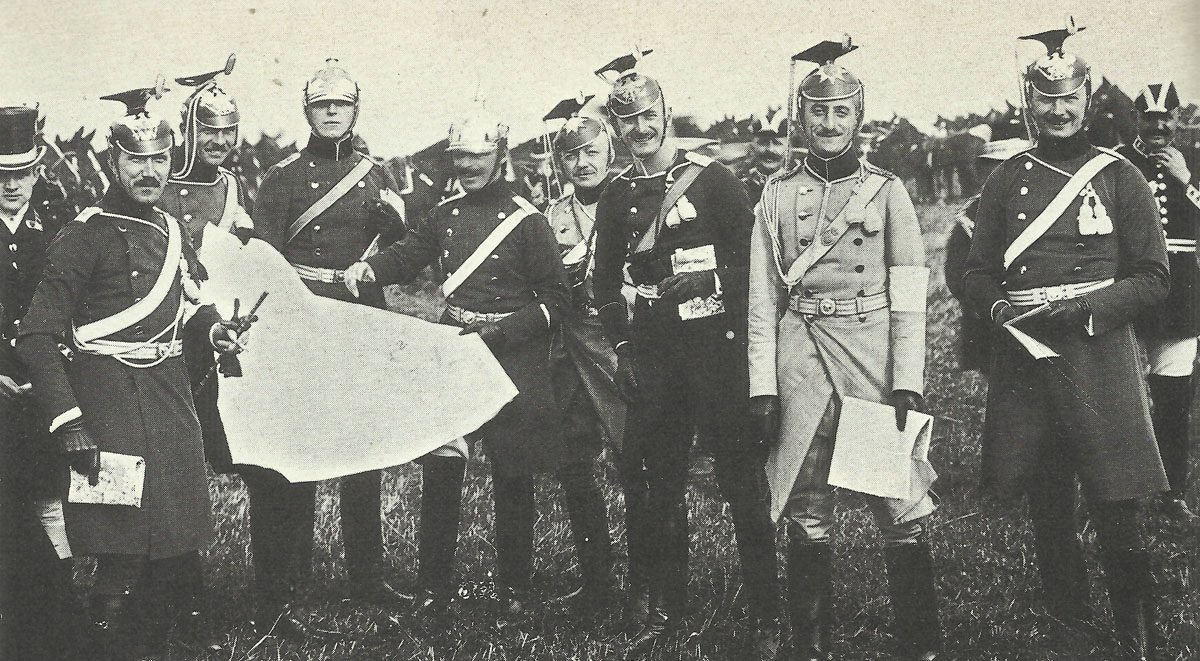
In order to be promoted beyond that as an officer, a general staff training was unavoidable. Therefore, the lower ranks were practically excluded due to their low level of education. These General Staff officers were determined by examination results, with only the best being accepted. They provided only about three to four percent of all officers in peace and could expect much faster promotion even at that time.
On the one hand, this system ensured that a stubborn ‘Colonel Blimp’ in the German army was sorted out before it reached the rank of colonel. However, these less suitable, older officers with their questionable qualifications remained on their post for a long time as commanders of companies or battalions.
During the First World War these ranks had to be combed out again and again in order to get rid of the most incompetent elements. In the year 1914 this happened already twice, in 1915 also, in 1916 already three times and in 1917 even seven times, while in the last year of war two combs were made again.
In the German Army (called Reichswehr) after the First World War, the promotion procedure was largely retained. In the case of the army, which was severely limited in scope by the Treaty of Versailles, this meant that promotions were even slower than before the war.
Seeckt therefore introduced a reform in which superiors of all ranks had to assess their subordinates, which became the main criterion for promotions.
In order to prevent abuse of the new procedure, the authors of the evaluations were informed that they would be judged according to the reliability of their evaluation sheets. The whole evaluation should be as short as possible and should be limited to the essential, such as personality, character, professional qualification and achievement.
By this new system an officer of the Reichswehr could normally assume that he would make it to the Regiment Commander, which at that time was an important position in the German army.
In order to achieve a higher rank, the General Staff training and the activity of a General Staff Officer (Ia) in a division was necessary. Only then could one become a division commander.
The limited possibilities for promotions in this very limited army of the Reichswehr threatened to have a damaging effect on the spirit of the officer corps. Therefore, the personnel office of the Reichswehr introduced a procedure in which, in addition to seniority, the individual abilities of exceptionally qualified officers were taken into account.
On average, about 15 percent of all officers of the Reichswehr were promoted because of their special aptitude. The majority of them were General Staff officers who must have served in a combat unit before, but other officers were also considered in exceptional cases.
This preferential promotion caused a steep increase in the careers of the selected officers, who on average jumped over 200 to 275 senior officers. Thus, the limited possibilities for promotion which had arisen from the Treaty of Versailles were again compensated for, even if only for a minority of those affected.
With Hitler‘s assumption of power things changed and the strong expansion of the army quickly led to an enlargement and rejuvenation of the officer corps. Nevertheless, the procedure of the Reichswehr during the Weimar Republic was maintained and the thirties of the last century thus became the ‘golden years’ of some ‘career makers’ in the new Wehrmacht.
In all the assessments, each officer had to be assessed by his superior as ‘above average’, ‘average’ or ‘below average’, with the latter classification leading directly to dismissal in the pre-war period.
Each army division also had lists in which its officers were divided into seven categories.
Category 1: Officers who were suitable for the high command of the Wehrmacht or the army.
Category 2: Suitable for the General Staff.
Category 3: suitable as adjutant.
Category 4: Officers with special suitability for further training.
Category 5: Those who, for health reasons, must be spared until further notice.
Category 6: Officers who were not suitable for the next higher rank.
Category 7: Those who were already unsuitable for their current position.
These division lists and evaluation sheets on officers enabled the Army Personnel Office to make excellent decisions on promotions and deployment. In addition, the members of the Office often visited the troops and were present during maneuvers and exercises, so that they knew and could classify practically all generals and general staff officers personally.
Even in the early years of the Second World War, this system, which had been in existence in Prussia for centuries since the time of Frederick the Great, was retained. However, the increasing bloody losses at the front meant that seniority was no longer taken so seriously, but that performance in the field was valued higher.
The front officers were deliberately emphasized first and foremost by this decree. These officers are the closest to death and should be the first to benefit from these opportunities for promotion.’
During the second half of the war, this change significantly accelerated the promotion of front-line officers, especially those who took the place of killed predecessors.
A second lieutenant as company commander could thus become lieutenant after just two months or the commander of a battalion could move from lieutenant to captain within six months.
With the duration of the war, it became more and more a prerequisite for promotion that officers earn their promotion with performance on the front. From July 1944 onwards, one could only be promoted as an officer in the General Staff if one had qualified for it at the front-line. And a new character trait ‘crisis-proof’ was introduced at Hitler’s insistence at the Army Personnel Office, and the significance of seniority became less and less important compared to the character traits.
This system clearly resulted in only officers with proven front-line skills were promoted, but at the expense of the traditional values of corps spirit among officers. This may have been in Hitler’s interest.
In any case, all these changes did not fail to have an effect, as the promotions in the second half of 1943 show.
There were three promotions to the Colonel General, all of which were only preferred and not according to seniority.
Of the 26 promotions to generals, only one was based on seniority.
Of the 86 new Lieutenants General, 67 or just under 80 per cent were promoted preferentially.
Only among the 154 promotions to the Major-General did seniority predominate, as 96 or 62.3 per cent of them were given the new rank.
Of the 328 new colonels, 198 or more than 60 percent were given preferential promotion.
206 of the 309 lieutenant-colonels or 67.7 percent were given preferential promotion.
Of the 984 new majors, 945 or 96 per cent were given preferential promotion.
For this purpose a number of officers were subsequently promoted to their current positions, who had taken over in the order of precedence through the death of their predecessor. These figures were directly related to the losses of the respective arms category.
Thus, 57 percent of the infantry officers were subsequently promoted to their current positions. The infantry lost 53 percent of its officers.
In the case of the Panzer troops, 19 per cent were subsequently promoted to 20 per cent of the officers’ losses.
For artillery, this figure was 16 per cent and for officers 18 per cent losses.
Among the engineers there were six per cent subsequent promotions with seven per cent officer losses.
The figures for the intelligence and communication troops were one to two per cent losses and for the general staff one per cent of the officers were subsequently promoted.
The more dangerous the deployment of the officers was, the clearly faster the promotion took place during the last war years of the Second World War.
Ranks in the National Armies and Air Forces
Military Ranks Part I:
Ranking, Description | Germany (Army) | Germany (Air Force) | Germany (Waffen-SS) | Great Britain (Army) | Great Britain (RAF) | United States (Army/Air Force) |
|---|---|---|---|---|---|---|
01 1st Marshal | - | Reichsmarschall | - | - | Marshal of the RAF | - |
02 Senior Marshal | - | - | - | - | Air Chief Marshal | - |
03 Field Marshal | General-feldmarschall | General-feldmarschall | - | Field-Marshal | Air Marshal | - |
04 General (I) | Generaloberst | Generaloberst | SS-Obergruppen-führer u.Gen.Obst.d.W-SS | General | Air Vice Marshal | General of the Armies of the United States (1945: General of the Army) |
05 General (II) | General der Infanterie (etc for arms) | General der Flieger | SS-Obergruppen-führer u.Gen.d.W-SS | - | - | General |
06 General (III) | - | - | - | - | - | - |
07 Lieutenant-General | Generalleutnant | Generalleutnant | SS-Gruppen-führer u.Gen.Lt.d.W-SS | Lieutenant-General | - | Lieutenant-General |
08 Major-General | Generalmajor | Generalmajor | SS-Brigade-führer u.Gen.Maj.d.W-SS | Major-General | - | Major-General |
09 Brigadier | - | - | SS-Oberführer | Brigadier | Air Commodore | Brigadier-General |
10 Colonel | Oberst | Oberst | SS-Standarten-führer | Colonel | Group Captain | Colonel |
11 Lieutenant-Colonel | Oberstleutnant | Oberstleutnant | SS-Obersturm-bannführer | Lieutenant-Colonel | Wing Commander | Lieutenant-Colonel |
12 Major | Major | Major | SS-Sturmbann-führer | Major | Squadron Leader | Major |
13 Captain (I) | Hauptmann bzw Rittmeister | Hauptmann | SS-Hauptsturm-führer | Captain | Flight Lieutenant | Captain |
14 Captain (II) | - | - | - | - | - | - |
15 Lieutenant (I) | Oberleutnant | Oberleutnant | SS-Obersturm-führer | Lieutenant | Flying Officer | First Lieutenant |
16 Lieutenant (II) | - | - | - | - | - | - |
17 2nd Lieutenant | Leutnant | Leutnant | SS-Untersturm-führer | 2nd Lieutenant | Pilot Officer | Second Lieutenant |
18 Ensign | - | - | - | - | - | - |
19 Warrant Officer (I) | - | - | - | Regimental/Staff-Sergant-Major etc | Warrant Officer | Chief Warrant Officer |
20 Warrant Officer (II) | - | - | - | Regtl. Quartermaster Sgt., Company Sergeant-Major | - | Warrant Officer junior grade |
21 Warrant Officer (III) | - | - | - | Platoon Sergeant-Major | - | - |
22 Warrant Officer (IV) | - | - | - | - | - | - |
23 Staff Sergeant | Stabsfeldwebel or Wachtmeister | - | SS-Sturmschar-führer | - | - | Master Sergeant |
24 Sergeant-Major | Oberfeldwebel or Wachtmeister | Oberfeldwebel oder Wachtmeister | SS-Hauptschar-führer | Colour Sergeant | Flight Sergeant | First Sergeant |
25 Senior Sergeant | Feldwebel or Wachtmeister | Feldwebel oder Wachtmeister | SS-Oberschar-führer | Sergeant | Sergeant | Technical Sergeant |
26 Sergeant | Unterfeldwebel oder Wachtmeister | Unterfeldwebel oder Wachtmeister | SS-Scharführer | - | - | Staff Sergeant |
27 Lance-Sergeant | - | - | - | Corporal oder Lance-Sergeant | - | Sergeant |
28 Staff-Corporal | - | - | - | - | - | - |
29 Corporal-Major | - | - | - | - | - | - |
30 Corporal | Unteroffizier or Oberjäger | Unteroffizier or Oberjäger | SS-Unterschar-führer | Corporal or Bombardier | Corporal | Corporal |
31 Staff Lance-Corporal | - | Stabsgefreiter | - | - | - | - |
32 Lance-Corporal-Major | Stabsgefreiter | Hauptgefreiter | - | - | - | - |
33 Senior Lance-Corporal | Obergfreiter | Obergefreiter | SS-Rottenführer | - | - | - |
34 Lance-Corporal | Gefreiter | Gefreiter | SS-Sturmmann | Lance-Corporal | Leading Aircraftman | - |
35 Superior Private | - | - | - | - | - | - |
36 Private 1st Class | Oberschütze | - | SS-Oberschütze | - | Aircraftman 1st class | Private first class |
37 Private 2nd Class | - | - | - | - | - | - |
38 Private | Schütze | Soldat or Flieger | SS-Schütze | Private | Aircraftmen 2nd class | Private |
39 Cadet | - | - | - | - | - | - |
Military Ranks Part II:
Ranking, Description | Soviet Union (1939-40) | Soviet Union (1940-45) | Japan (Army/Air force) | Italy (Army) | Italy (Air Force) | France (Army/Air Force) |
|---|---|---|---|---|---|---|
01 1st Marshal | Marshal Sovetskogo Soyuza | Marshal Sovetskogo Soyuza | - | 1° Marescillo dell'Impero | - | - |
02 Senior Marshal | - | Glavnyy Marshal (Arilleriyi etc) | - | Maresciallo d'Italia | Maresciallo dell Avia | Marechal de France |
03 Field Marshal | - | Marshal (Aviatsiyi etc) | Gen-sui | - | - | - |
04 General (I) | Komandarm Pervogo Ranga | General Armiyi | Tai-Sho | Generale d'Armata | Generale d'Armata Aerea | General d' Armee |
05 General (II) | Kommandarm Vtorogo Ranga | General Polkovnik | - | Generale di C.A. designato d'Armata | Generale di Corpo d'Armata Aerea | General de Corps d'Armee |
06 General (III) | Kommandir Korpusa | - | - | Generale di Corpo d'Armata | Generale di Squadra Aerea | - |
07 Lieutenant-General | Kommandir Diviziyi | General Leytenant | Chu-Jo | Generale di Divisione | Generale di Divisione Aerea | General de Division |
08 Major-General | Kommandir Brigady | General Major | Sho-Sho | Generale di Brigata | Generale di Brigata Aerea | General de Brigade |
09 Brigadier | - | - | - | - | - | - |
10 Colonel | Polkovnik | Polkovnik | Tai-Sa | Colonnello | Colonnello | Colonel |
11 Lieutenant-Colonel | - | Podpolkovnik | Chu-Sa | Tenente Colonnello | Tenente Colonnello | Lieutenant-Colonel |
12 Major | Major | Major | Sho-Sa | Maggiore | Maggiore | Chef de Bataillon |
13 Captain (I) | Kapitan | Kapitan | Tai-i | 1° Capitano | 1° Capitano | Capitaine |
14 Captain (II) | - | - | - | Capitano | Capitano | - |
15 Lieutenant (I) | Starshiy Leytenant | Starshiy Leytenant | Chu-i | 1° Tenente | 1° Tenente | Lieutenant |
16 Lieutenant (II) | Leytenant | Leytenant | - | Tenente | Tenente | - |
17 2nd Lieutenant | Mladshiy Leytenant | Mladshiy Leytenant | Sho-i | Sottotenente | Sottitenente | Sous-Lieutenant |
18 Ensign | - | - | - | - | - | - |
19 Warrant Officer (I) | - | - | Tokumo So-Cho | Aiutante di Battaglia | Aiutante di Battaglia | Adjudant-Chef |
20 Warrant Officer (II) | - | - | - | Maresciallo Maggiore | Maresciallo Maggiore | Adjudant |
21 Warrant Officer (III) | - | - | - | Maresciallo Capo | Maresciallo Capo | - |
22 Warrant Officer (IV) | - | - | - | Maresciallo Ordinario | Maresciallo Ordinario | - |
23 Staff Sergeant | - | - | - | - | - | - |
24 Sergeant-Major | Starshina | Starshina | So-Cho | Sergente Maggiore | Sergente Maggiore | Sergent-Chef |
25 Senior Sergeant | Starshiy Serzhant | Starshiy Serzhant | - | - | - | - |
26 Sergeant | Serzhant | Serzhant | Gun-So | Sergente | Sergente | Sergent |
27 Lance-Sergeant | Mladshiy Serzhant | Mladshiy Serzhant | - | - | - | - |
28 Staff-Corporal | - | - | - | - | - | - |
29 Corporal-Major | - | - | - | Corporale Maggiore | Primo Aviere | Caporal-Chef |
30 Corporal | Yefreytor | Yefreytor | Go-Cho | Corporale | Aviere Scelto | Caporal |
31 Staff Lance-Corporal | - | - | - | - | - | - |
32 Lance-Corporal-Major | - | - | - | - | - | - |
33 Senior Lance-Corporal | - | - | - | - | - | - |
34 Lance-Corporal | - | - | Go-Cho Kimmu Joto Hei | - | - | - |
35 Superior Private | - | - | Joto Hei | - | - | - |
36 Private 1st Class | - | - | Itto Hei | Appuntato (Cavalry) | - | Soldat de 1ere Classe |
37 Private 2nd Class | - | - | Nito Hei | - | - | - |
38 Private | Krasnoarmeyets | Krasnoarmeyets | - | Soldato | Aviere | Soldat de 2ene Classe |
39 Cadet | - | - | - | - | - | Aspirant |
Military Ranks Part III:
Ranking, Description | Belgium (Army/Air Force) | Bulgaria (Army/Air Force) | China (Army/Air Force) | Denmark (Army/Air Force) | Finland (Army/Air Force) | Hungary (Army/Air Force) |
|---|---|---|---|---|---|---|
01 1st Marshal | - | - | - | - | Sotamarsalkka | - |
02 Senior Marshal | - | - | - | - | - | - |
03 Field Marshal | - | - | T'e Chih Shang Chiang | - | - | Tabornagy |
04 General (I) | - | General | I Chi Shang Chiang | General | Kenraali | Vezerezredes |
05 General (II) | - | - | Erh Chi Shang Chiang | - | - | - |
06 General (III) | - | - | - | - | - | - |
07 Lieutenant-General | Lieutenant-General or Luitenant-Generaal | General-Leytenant | Chiung Chiang | Generallojtnant | Kenraaliluutnantti | Altabornagy |
08 Major-General | General-Major or Generaal-Majoor | General-Major | Shao Chiang | Generalmajor | Kenraalimajuri | Vezerörnagy |
09 Brigadier | - | - | - | - | - | - |
10 Colonel | Colonel or Kolonel | Polkovnik | Shang Hsiao | Oberst | Eversti | Ezredes |
11 Lieutenant-Colonel | Lieutenant-Colonel or Luitenant-Kolonel | Popdpolkovnik | Chung Hsiao | Oberstlojtnant | Everstiluutnantti | Alezredes |
12 Major | Major or Majoor | Major | Shao Hsiao | - | Majuri | Örnagy |
13 Captain (I) | Captaine-Commandant or Kapitein-Kommandant | Kapitan | Shang Wei | Kaptajn | Kapteeni | Szazados |
14 Captain (II) | Capitaine oder Kapitein | - | - | Kaptajnloitnant | - | - |
15 Lieutenant (I) | Lieutenant or Luitenant | Poruchik | Chung wei | Prmeierlojtnant | Luutnantti | Föhadnagy |
16 Lieutenant (II) | - | - | - | Lojtnant af Reseven | - | - |
17 2nd Lieutenant | Sous-Lieutenant or Onder-Luitenant | Podporuchik | Shao Wei | Sekundlojtnant | Vänrikki | Hadnagy |
18 Ensign | - | - | - | - | - | - |
19 Warrant Officer (I) | Adjudant de 1ere Classe or Adjutant 1ere Vilos | Feldfebel | Chun Wei | Korpsofficaint | Sotilasmestari | Alhadnagy |
20 Warrant Officer (II) | Adjudant or Adjutant | - | - | Stabsofficiant | - | - |
21 Warrant Officer (III) | - | - | - | Overofficiant | - | - |
22 Warrant Officer (IV) | - | - | - | Officiant | - | - |
23 Staff Sergeant | - | - | - | - | - | Fötörsörmester |
24 Sergeant-Major | 1er Sergent-Major or 1ere Sergeant-Majoor | - | Shang Shih | Oversergent | Vääpeli | Törzsörnester |
25 Senior Sergeant | Premier Sergent or 1ere Sergeant | - | - | - | Ylikersantti | - |
26 Sergeant | Sergent or Sergeant | Podofitser | Chung Shih | Sergent | Kersantti | Örmester |
27 Lance-Sergeant | - | - | - | - | Alikersantti | - |
28 Staff-Corporal | - | - | - | - | - | - |
29 Corporal-Major | - | - | - | - | - | Szajaszcezetö |
30 Corporal | Caporal or Korporaal | Kandidat Prodofitser | Hsia Shih | Korporal | Korpraali | Tizedes |
31 Staff Lance-Corporal | - | - | - | - | - | - |
32 Lance-Corporal-Major | - | - | - | - | - | - |
33 Senior Lance-Corporal | - | - | - | - | - | - |
34 Lance-Corporal | - | - | - | Underkorporal | - | - |
35 Superior Private | - | - | Shang Teng Ping | - | - | - |
36 Private 1st Class | Soldat d'elite or Soldaat 1ere Klasse | Efreytor | I Teng Ping | - | - | Örvezetö |
37 Private 2nd Class | - | - | Erh Teng Ping | - | - | - |
38 Private | Soldate or Soldaat | Rednik | - | Menig | Sotamies | Honved |
39 Cadet | - | Ofitserski Kandidat | - | - | - | Zaszlos |
Military Ranks Part IV:
Ranking, Description | Greece (Army) | Greece (Air Force) | Netherlands (Army/Air Force) | Norway (Army/Air Force) | Poland (Army/Air Force) | Yugoslavia (Army/Air Force) |
|---|---|---|---|---|---|---|
01 1st Marshal | - | - | - | - | - | - |
02 Senior Marshal | - | - | - | - | Marszalek Polski | - |
03 Field Marshal | Stratigos | - | - | - | - | Vojvoda |
04 General (I) | Archistratigos | Pterarchos | Generaal | General | General Broni | Armijski Djeneral |
05 General (II) | - | - | - | - | - | - |
06 General (III) | - | - | - | - | - | - |
07 Lieutenant-General | Anitistratigos | Antipterarchos | Luitenant-Generaal | Generalloytnant | General Dywizji | Divizijski Djeneral |
08 Major-General | Ypostratigos | Ypopterarchos | Generaal-Majoor | Generlmajor | General Brygady | Brigadni Djeneral |
09 Brigadier | - | Taxiarchos Aeroporias | - | - | - | - |
10 Colonel | Syntagmatarchis | Sminarchos | Kolonel | Oberst | Pulkownik | Pukovnik |
11 Lieutenant-Colonel | Antisynatgmatarchis | Antisminarchos | Luitenant-Kolonel | Oberstloytnant | Podpulkownik | Potpukovnik |
12 Major | Tagmatarchis | Episminagos | Majoor | Major | Major | Major |
13 Captain (I) | Lochagos | Sminagos | Kapitein | Kaptein | Kapitan | Kapetan I Klase |
14 Captain (II) | - | - | - | - | - | Kapetan II Klase |
15 Lieutenant (I) | Ypolochago | Yposminagos | Eerste-Luitenant | Loytnant | Porucznik | Porucnik |
16 Lieutenant (II) | - | - | - | - | - | - |
17 2nd Lieutenant | Anthypolochagos | Anthyposminarchos | Tweede-Luitenant | Fenrik | Podporucznik | Podporucnik |
18 Ensign | - | - | - | - | - | - |
19 Warrant Officer (I) | Monimos Anthypaspistia | Archisminias | Adjudant-onder-Officier | - | Chorazy | - |
20 Warrant Officer (II) | - | - | - | - | - | - |
21 Warrant Officer (III) | - | - | - | - | - | - |
22 Warrant Officer (IV) | - | - | - | - | - | - |
23 Staff Sergeant | - | - | - | Stabsersjant | - | - |
24 Sergeant-Major | Monimos Epilochias | Episminias | Sergeant-Majoor | - | Starszy Sierzant | Narednik vodnik I, II, III Klase |
25 Senior Sergeant | - | - | Sergeant ter 1e Klasse | - | - | Narednik |
26 Sergeant | Monimos Lochias | Sminias | Sergeant | Sersjant | Sierzant | Podnarednik |
27 Lance-Sergeant | - | - | - | - | Plutonowy | - |
28 Staff-Corporal | - | - | - | - | - | - |
29 Corporal-Major | - | - | - | - | - | - |
30 Corporal | Monimos Dekaneus | Yposminias A | Korporaal | Korporal | Kapral | Kaplar |
31 Staff Lance-Corporal | - | - | - | - | - | - |
32 Lance-Corporal-Major | - | - | - | - | - | - |
33 Senior Lance-Corporal | - | - | - | - | - | - |
34 Lance-Corporal | Efredos Dekaneus | Yposminias B | - | Visekorporal | Strszy Szeregowiec | - |
35 Superior Private | - | - | - | - | - | - |
36 Private 1st Class | - | - | Soldaat ter 1e klasse | - | - | - |
37 Private 2nd Class | - | - | - | - | - | - |
38 Private | Stratiotis | Sminitis | Soldaat | Menig | Szeregowiec | Redov |
39 Cadet | - | - | - | - | Aspirant | - |
Military Ranks Part V:
| Ranking, Description | Romania (Army) | Romania (Air Force) | ||||
|---|---|---|---|---|---|---|
| 01 1st Marshal | - | - | - | - | - | - |
| 02 Senior Marshal | Maresal al Rominia | - | - | - | - | - |
| 03 Field Marshal | - | - | - | - | - | - |
| 04 General (I) | General de Armata | - | - | - | - | - |
| 05 General (II) | Generald de Corps de Armata | - | - | - | - | - |
| 06 General (III) | - | - | - | - | - | - |
| 07 Lieutenant-General | General de Divizie | General Commandant | - | - | - | - |
| 08 Major-General | Generak de Brigada | General de Escadra | - | - | - | - |
| 09 Brigadier | - | - | - | - | - | - |
| 10 Colonel | Colonel | Commandor | - | - | - | - |
| 11 Lieutenant-Colonel | Locotenent-Colonel | Capitan-Commandor | - | - | - | - |
| 12 Major | Major | Locotenent-Commandor | - | - | - | - |
| 13 Captain (I) | Capitan | Capitan | - | - | - | - |
| 14 Captain (II) | - | - | - | - | - | - |
| 15 Lieutenant (I) | Locotenent | Locotenent | - | - | - | - |
| 16 Lieutenant (II) | - | - | - | - | - | - |
| 17 2nd Lieutenant | Sublocotenent | Sublocotenent | - | - | - | - |
| 18 Ensign | - | - | - | - | - | - |
| 19 Warrant Officer (I) | Plutonier Adjudant | Adjudant sef Aviator | - | - | - | - |
| 20 Warrant Officer (II) | Plutonier Maior | Adjudant Major Aviator | - | - | - | - |
| 21 Warrant Officer (III) | Plutonier | Adjudant Aviator | - | - | - | - |
| 22 Warrant Officer (IV) | - | Adjutant Stagiar Aviator | - | - | - | - |
| 23 Staff Sergeant | - | - | - | - | - | - |
| 24 Sergeant-Najor | Sergent Maior | - | - | - | - | - |
| 25 Senior Sergeant | - | - | - | - | - | - |
| 26 Sergeant | Sergent | Sergent | - | - | - | - |
| 27 Lance-Sergeant | - | - | - | - | - | - |
| 28 Staff-Corporal | - | - | - | - | - | - |
| 29 Corporal-Major | - | - | - | - | - | - |
| 30 Corporal | Caporal | Caporal | - | - | - | - |
| 31 Staff Lance-Corporal | - | - | - | - | - | - |
| 32 Lance-Corporal-Major | - | - | - | - | - | - |
| 33 Senior Lance-Corporal | - | - | - | - | - | - |
| 34 Lance-Corporal | Fruntas | Fruntas | - | - | - | - |
| 35 Superior Private | - | - | - | - | - | - |
| 36 Private 1st Class | - | - | - | - | - | - |
| 37 Private 2nd Class | - | - | - | - | - | - |
| 38 Private | Soldat | Soldat | - | - | - | - |
| 39 Cadet | - | - | - | - | - | - |
References and literature
The Armed Forces of World War II (Andrew Mollo)
Kampfkraft – Fighting Power (Martin van Crefeld)
Kampfkraft (Martin van Creveld)
Der Genius des Krieges (Trevor N. Dupuy)


